HP3325A Synthesized Function Generator
The 3325A was one if not the first commercial available Function Generator based on the Fractional-N technology. Developed around the end of the 1970s its operation is controlled fully digitial, it has an simple HP-IB Interface (GP-IB, but HP called it different at least at the beginning) and is for example able to do the following:
- generates sine wave up to 21 MHz, square wave up to 11 MHz and Triangle wave, positive & negative slope ramp up to 11 kHz
- The minimum selectable frequency is 1µHz. Frequency resolution is 1µHz below 100kHz, and 1mHz for frequencies 100 kHz and higher
- Output amplitude can be selected between 1mV up to 10V peak-peak amplitude. DC offset can be selected between +/- 4.5V.
- The unit allows to apply a phase offset in the range of +/-719.9° with respect to abitrary starting phase, or assigned zero phase. Resolution is 0.1°.
- The generator has an output impedance of 50 ohms, and also allows to use an external reference clock signal.
- The unit has an amplitude and phase modulation input. A signal connector at the rear allows to generate sine waves up to 61 MHz with the downside that this signal source is not so clean, and that its amplitude is fixed with 0dBm
- is able to do linear or logarithmic frequency sweeps

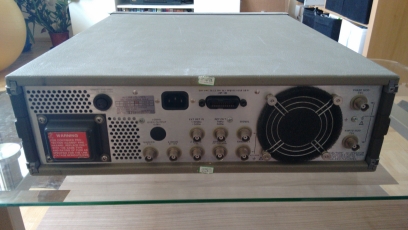

General weak points or drawbacks of the 3325A seem to be
- not exactly a small footprint on any workbench. It is not so heavy as it might look, but if space is at premium the 3325A is probably not the best selection
- Sticky buttons. Not a big problem on my unit but I still have buttons which are more difficult to press and to use. The buttons are for sure a definite weakness
- It is possible that the Attenuator relays/contacts on the attenuator PCB get bad. This means the unit will fail its autocal. Fortunetly my unit does not have this problem until now
- The HP nanoprocessor on the control board: very hard to obtain. If this device would fail for whatever reason it could be that your 3325A ends as an expensive door stopper
- In comparison to new (and probably not more expensive) function generators almost no functions built in: no arbitrary waveform generation, fixed duty cycle...
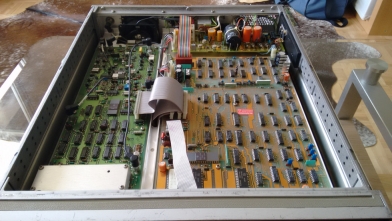
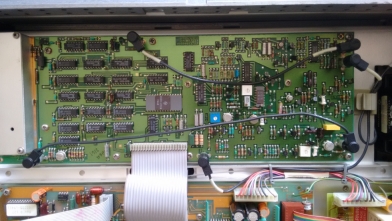
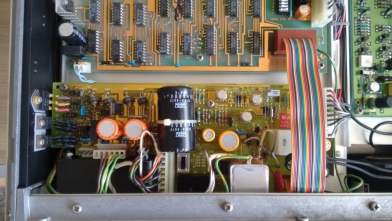
The operation of the 3325a is controlled by the control board on the top with lots of different digital devices. Here we find also the HP part "1820-1691", the so called nanoprocessor, a microprozessor specificly designed and used in some products by HP from this time. Interesting about this prozessor is that it is a NMOS device, and that it also needs a negative supply voltage for proper operation. I was reading in the internet that the first nanoprozessors which were produced had a higher production variance of the needed negative supply voltage. Therefore each produced device was handcharacterized and then the correct negative supply voltage for each device was written down by hand on the package. Only later HP improved the production process and the correct negative voltage was stabilized to be -5.0V. This information could be useful for someone that has to change the prozessor...it could be not enough to simply swap the prozessor. If the new prozessor needs a different negative supply voltage then the old one than a resistive divider in the unit has to be adjusted. My unit seems to be a newer one, because my prozessor has no handwritten note for the correct voltage on it anymore, and the -5.0V are already printed with the part name onto the device package.
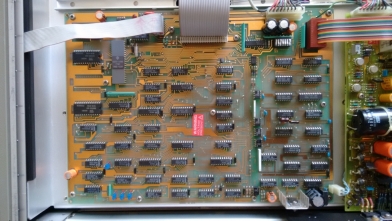

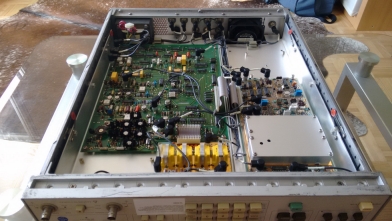
If the 3325A is flipped on its other side then more PCBs can be found (see picture above on the right). The bottom half of the instrument contains the mixer board (left picture), the attenuator PCB (picture in the middle), and the largest PCB which is the output board with the final output stage circuitry (right picture).
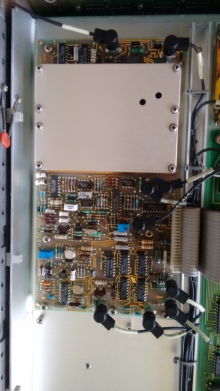
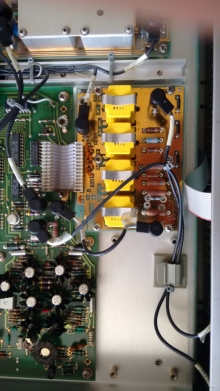
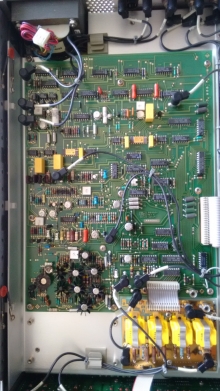
I really like my 3325A, but I am also sure that it is not the right instrument for everybody. If somebody prefers more functions and a newly built unit then maybe it is a better idea to get something new. But I like the HP built quality, the construction and I also like the fact that my generator is most likely more than 30 years old and still works. Of course it is a risk that something old like this can break any day, but I am also not sure if something built today will even work anymore after that lifespan. An if it breaks I still have the full service-manual with all circuit diagrams, and probably the chance to fix it, if not a custom HP part breaks down. I hope my 3325A will still have a lot of life time left in it.
